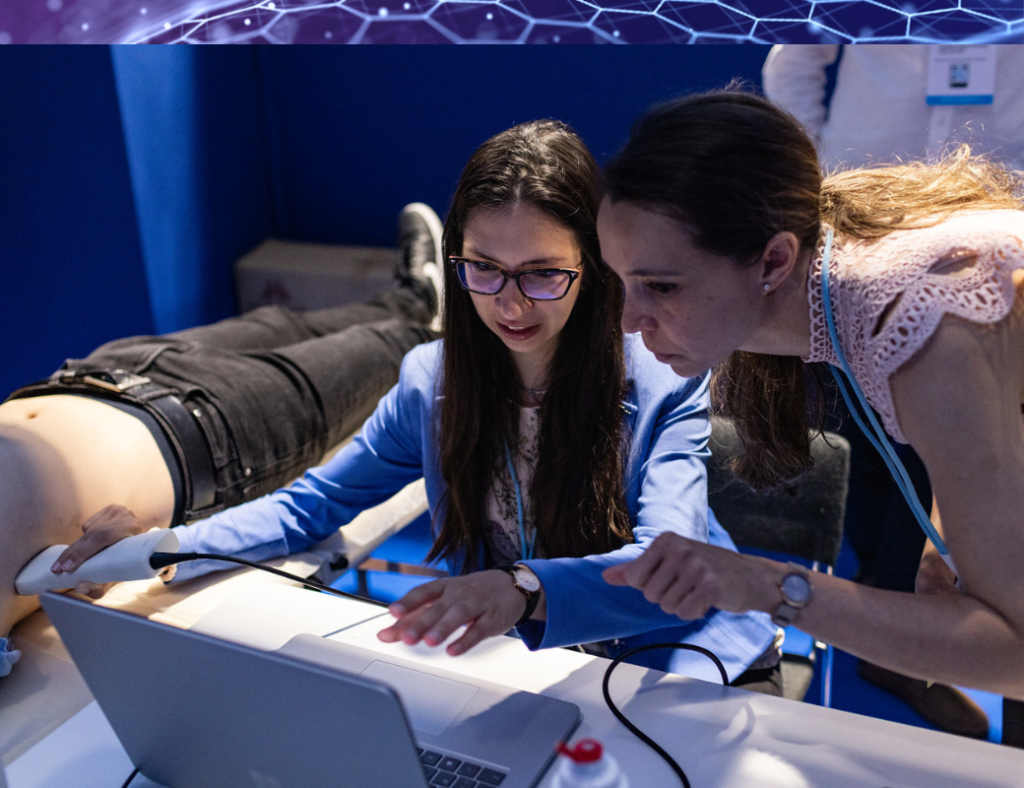Skills learning centres
Roll up your sleeves, attend the Skills Learning Centre sessions! These hands on courses will improve your practical skills in a variety of fields!

Skills Learning Centre on Abdominal Sonography

This Skills Learning Centre will introduce ultrasonography to hepatologists as a clinical, multi-modal, point-of-care method for the diagnosis and prognostic assessment of liver diseases.
Learning Objectives:
- To identify the anatomical structures involved in liver diseases:
- Liver segmentation; spleen; gallbladder and bile ducts; vascular structures: portal, splenic and superior mesenteric veins, IVC and hepatic veins, hepatic and splenic arteries; peritoneal fluid accumulation sites.
- To learn about vascular examination techniques
- Color and pulse Doppler; non-Doppler techniques
- To learn about liver fat quantification
- To learn about liver and spleen stiffness measurement
Skills Learning Centre on Variceal Bleeding

This Skills Learning Centre aims to showcase the most common endosocpic interventions performed in hepatology. Endoscopy plays a fundamental role in the management of patients with all types of liver disease. Additionally, both the fields of hepatology and endoscopy have become very specialised and thus a thorough knowledge of the indications, findings, therapeutic possibilities and complications that arise from endoscopic interventions are of key importance for the hepatologist. Thus the Skills Learning Centre will offer a hands on experience with common and also novel endoscopic methods: band ligation, cyanoacrylate injection, esophageal stents for the management of varices and portal hypertension.
Learning Objectives:
- How to mount band ligators
- How to perform variceal banding for treatment of active bleeding and varices eradication
- How to perform glue injection for gastric varices
- How to mount ELLA stent and how to release the stent
Skills Learning Centre on Liver and Spleen Elastography

The utility of Vibration-controlled Transient Elastography (VCTE) progressively increased over the last decade. Created at first as a non-invasive toll to assess liver fibrosis, VCTE is nowadays used not only as a diagnostic but more importantly as a prognostic instrument to be used in clinical practice.
At the liver and spleen stiffness Skills Learning Centre:
• a short presentation will be provided to all the attendings to discover the utilities and the updates on the use of VCTE
• multiple tutors will introduce the attendings to the practical use of VCTE, specifically on how to detect Liver Stiffness, how to use CAP and how to detect Spleen stiffness
• attendees will have the possibility of using the different devices themselves, with the help of the tutors.
Learning Objectives:
- To be able to perform and to interpret the results of liver stiffness by VCTE to role-in and role-out advanced fibrosis: how to use the machine, how to read the elastogram, how to recognize pitfalls and how to apply these results in clinical practice.
- To choose the best probe to be used according to the patient (S for pediatric, M for non-obese patients, XL for obese patients)
- To be able to integrate the liver elastogram with the non-invasive diagnosis of steatosis by the use of CAP, useful in patients with metabolic-associated liver disease and with a deeper impact on the prognosis of patients with liver disease etiology other than metabolic
- To provide a prognostic stratification of patients by integrating the liver stiffness with spleen stiffness measured by the new dedicated spleen probe to assess the risk of liver-related (portal hypertension-mediated) complications.
Skills Learning Centre on Liver Hemodynamics

This year’s hands-on session on hepatic hemodynamics will focus on hepatic venous pressure gradient (HVPG)-measurement, transjugular liver biopsy, and transjugular intrahepatic portosystemic shunt (TIPS) placement. Participants will discuss the role of these interventions in patient management with experts in the field and also obtain practical skills.
Learning Objectives:
- Increase the knowledge of minimally invasive diagnostic (HVPG and tranjsugular liver biopsy) and therapeutic techniques (TIPS)
- Review the indications/contraindications of these methods
- Learn in detail the technical aspects of these techiniques (including also the characteristics of the electronic chart for a realiable measurement)
- Exchange experiences with tutors and more experienced attendees

